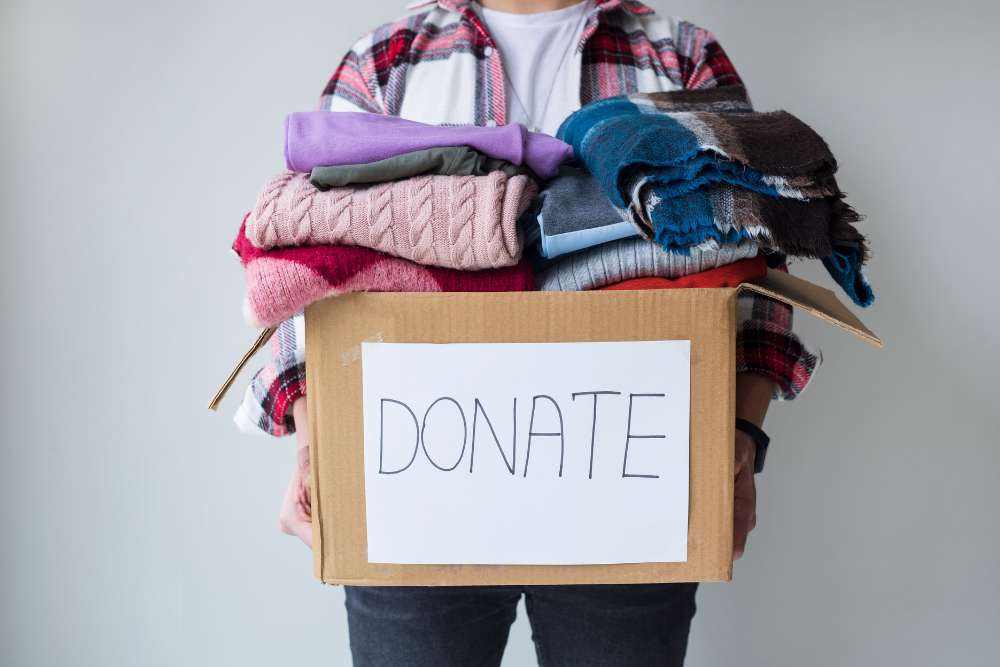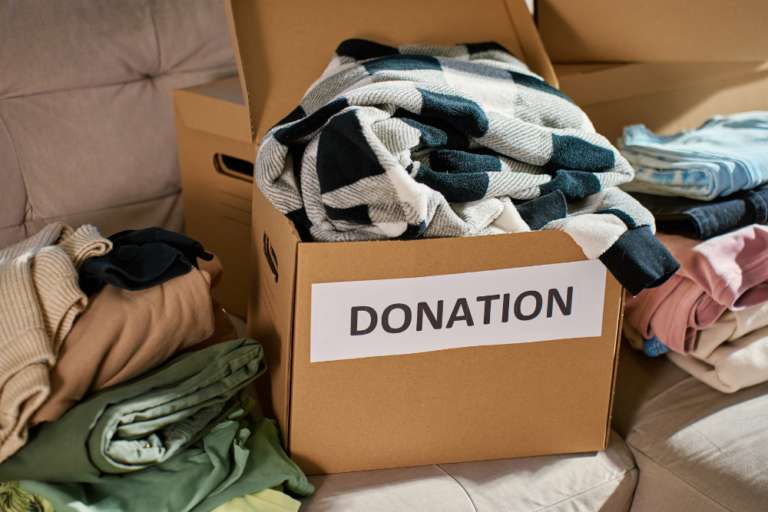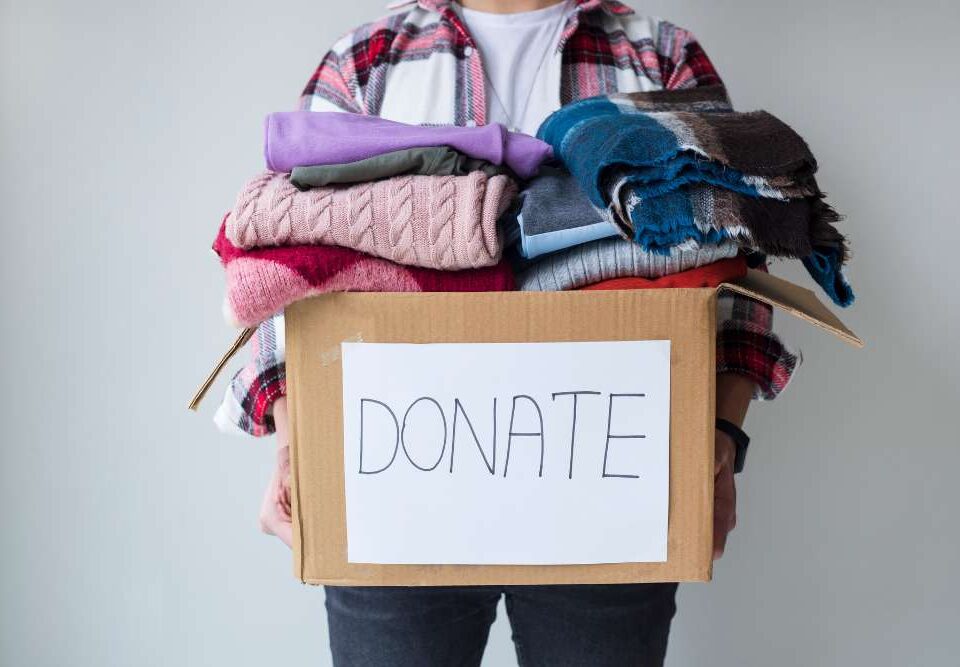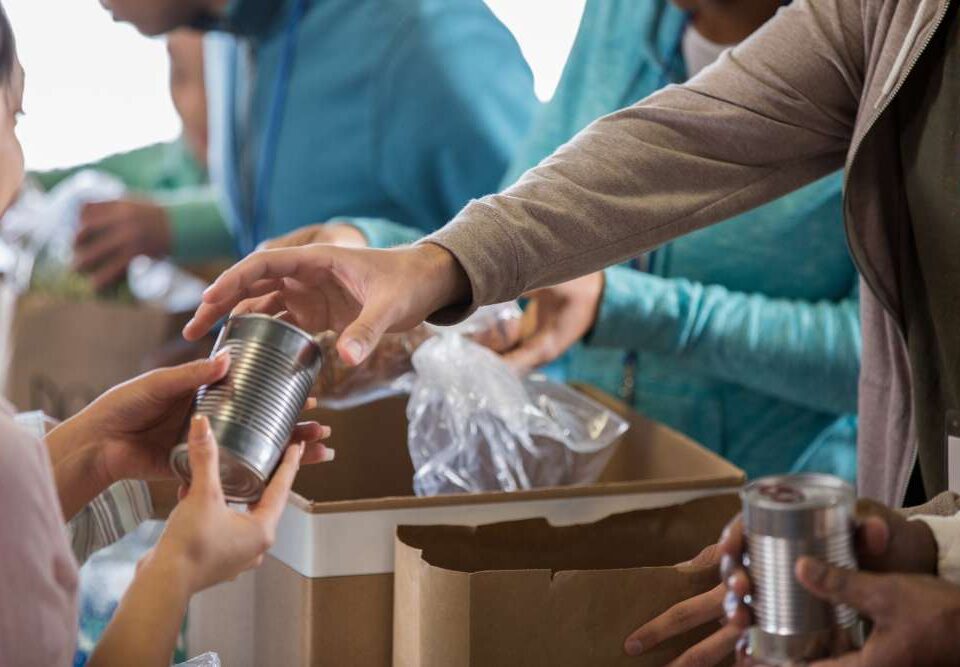
Why You Should Hire a Junk Removal Service that Specializes in Recycling
September 23, 2025
How to Reduce Your Junk’s Carbon Footprint with Eco-Friendly Disposal
September 23, 2025The Environmental Benefits of Donating Items Instead of Throwing Them Away
Every year, millions of usable items are discarded and sent to landfills, even though many could serve a valuable purpose for others. From furniture and appliances to clothing and electronics, these items often end up as waste simply because people choose disposal over donation. Donating instead of discarding creates meaningful environmental benefits while also supporting communities. The act reduces landfill waste, saves resources, and decreases pollution tied to manufacturing new products. Choosing donation over disposal may feel small on an individual level, but collectively, it builds a culture of sustainability. Simple choices like this shape a cleaner, greener future.
Reducing landfill waste with conscious donation
Donating items helps cut down on the enormous volume of waste that ends up in landfills each year. Landfills are not just unsightly; they also release harmful greenhouse gases like methane, which significantly contribute to climate change. Every piece of furniture, appliance, or piece of clothing redirected from a landfill through donation reduces pressure on these already overflowing sites. This act lessens the long-term environmental damage associated with waste accumulation.
By giving items a second life through donation, communities can also slow the rapid growth of landfill zones that consume land otherwise usable for green spaces or agriculture. Reducing landfill waste not only preserves local environments but also decreases the financial and environmental burden of building new waste facilities. Donation allows people to actively contribute to waste reduction without much effort. What may seem like a small decision becomes part of a larger environmental solution.
Conserving energy by extending product lifespans
When items are donated instead of trashed, they extend their useful lifespan, which reduces the demand for new products. Manufacturing consumes massive amounts of energy, often relying on fossil fuels. The process includes extracting raw materials, transporting them, and powering factories. By ensuring items like furniture or appliances continue to be used, donation prevents unnecessary energy expenditure linked to producing replacements.
Even something as simple as donating a table or computer keeps resources circulating within the economy. This concept of reuse conserves energy on a broader scale because fewer new products must be manufactured. Every donation essentially saves the energy embedded in that product’s creation. Conserving energy through reuse also directly lowers greenhouse gas emissions, which improves environmental health. A single donation may feel minor, but multiplied across communities, it represents a significant energy-saving practice with lasting ecological benefits.

Preserving raw materials through reuse
Most products require valuable raw materials like wood, metals, and plastics. Extracting these materials often damages ecosystems through mining, deforestation, or drilling. When people donate usable items, they help reduce the need for additional raw material extraction. This simple act preserves natural resources and prevents further strain on delicate ecosystems already facing challenges from overuse.
Consider furniture as an example. Donating a wooden table allows it to be used for years to come, which avoids the need to cut down trees for new products. Similarly, electronics contain metals that are difficult to mine sustainably. Passing them along for reuse spares valuable resources from being extracted. The act of donation is a powerful way to keep natural materials circulating in a closed loop, where they serve multiple owners rather than becoming waste. By donating, individuals take part in protecting the earth’s finite resources.
Lowering carbon emissions linked to manufacturing
The process of creating new products is a major contributor to carbon emissions. Factories burn fuels, transportation moves goods across long distances, and supply chains demand constant energy. Donating items reduces the need for replacement goods, which directly lowers the emissions tied to production. Fewer new items being manufactured means fewer greenhouse gases released into the atmosphere.
For instance, choosing to donate an appliance keeps it out of a landfill and prevents the emissions that would have been generated from producing a brand-new one. Over time, these avoided emissions accumulate into a meaningful reduction in environmental impact. The connection between personal choices and global carbon levels is clear: donating instead of discarding is an accessible way for everyday people to influence climate outcomes. It proves that individual actions, while small in scale, collectively create significant change in reducing carbon footprints.
Protecting ecosystems from harmful waste
When items are thrown away, many end up releasing toxins into the soil, air, or water. Electronics leak heavy metals, plastics break down into microplastics, and treated wood can contaminate soil with chemicals. By donating items that are still usable, people prevent these materials from becoming environmental hazards. Protecting ecosystems begins with keeping harmful waste out of landfills and waterways.
Donation also reduces the demand for new materials, which spares ecosystems from the destructive practices tied to resource extraction. Forests, oceans, and wildlife habitats remain healthier when fewer resources are needed to produce new goods. The ripple effect of donation safeguards natural systems and biodiversity in ways that are often overlooked. By viewing donation as more than a charitable act, individuals can recognize it as an environmental shield against pollution and degradation. This choice protects both human health and the fragile balance of ecosystems.
Supporting a circular economy through donation
Donation fuels the principles of a circular economy, where goods remain in circulation rather than becoming waste. Instead of following a linear model of production, use, and disposal, donation keeps items circulating to new owners. This system reduces environmental pressure while ensuring resources are used more efficiently. It transforms the act of getting rid of clutter into a sustainable exchange.
Circular economies also create opportunities for innovation and community benefit. Items given away are often repaired, refurbished, or resold, generating local economic activity without draining new resources. Supporting this cycle helps reduce overall waste, preserve energy, and decrease environmental impacts. Each donated item becomes part of a loop where value is maximized instead of discarded. Choosing to donate strengthens this model, aligning everyday actions with broader environmental goals that prioritize sustainability over consumption and waste.
Reducing pollution created by incineration
Some waste that does not go to landfills ends up in incinerators. While this method reduces volume, it creates significant air pollution, releasing carbon dioxide, dioxins, and other harmful compounds. By donating items, people divert usable goods from waste streams that might otherwise lead to incineration. This choice directly prevents additional pollution from entering the atmosphere.
Incineration also wastes the energy and resources originally invested in making those items. A sofa or desk burned in an incinerator releases nothing of value, while the same item donated can serve years of use in a new home. Reducing reliance on incineration begins with decreasing the flow of goods into disposal systems. Donation achieves this by intercepting usable products before they reach that stage.
Encouraging sustainable consumer behavior
Donation encourages individuals to adopt more sustainable habits. When people realize that their unwanted items still hold value, they begin to see consumption differently. Instead of always replacing with new, they may choose secondhand options or prioritize reusing and sharing. This shift reduces demand for unnecessary production and supports a culture built on thoughtful use of resources.
The act of donating also creates a sense of accountability. Knowing that an item will continue its life elsewhere motivates people to buy products that last and avoid single-use options. Sustainable consumer behavior grows when donation is part of everyday practice. Over time, this mindset fosters communities that prioritize the planet over convenience.
Building stronger communities through shared resources
Environmental benefits often overlap with social advantages, and donation is a prime example. By giving away items, individuals contribute to a system where resources are shared instead of wasted. This reduces demand for new goods, which in turn eases the environmental burden of production. At the same time, it supports people in need, creating a more resilient and connected community.
Communities thrive when resources circulate efficiently. A donated bed or kitchen set not only helps a family but also prevents the environmental cost of producing another. These shared benefits demonstrate that environmental action and social impact can align. Communities built on sharing are better equipped to handle challenges while reducing waste.
Preserving future generations’ access to resources
Every resource consumed today leaves less for tomorrow. Donation plays a vital role in ensuring future generations inherit a planet with enough resources to thrive. By extending the lifespan of products, people reduce the demand for raw materials and energy needed to create new goods. This conservation effort safeguards natural resources like forests, minerals, and fossil fuels for the next generation.
Future sustainability depends on choices made now. Donation is a practical, accessible way for individuals to participate in resource preservation. By keeping items in circulation, communities leave behind fewer environmental scars, such as depleted forests or polluted waterways. Each donation is a statement that today’s convenience should not outweigh tomorrow’s survival. Preserving resources for future generations requires collective responsibility, and donation represents one of the simplest yet most effective tools available for securing a more sustainable world.
Conclusion
North Bay Junk Removal provides eco-conscious junk removal solutions designed to minimize waste and maximize positive impact for both people and the planet. Serving Santa Rosa, CA, their team specializes in recycling, donating, and responsibly disposing of items to ensure that nothing usable goes to waste unnecessarily. By partnering with local organizations and prioritizing sustainable practices, they transform the process of clearing clutter into an opportunity to protect the environment.
For residents and businesses looking for reliable junk removal with a focus on sustainability, North Bay Junk Removal is a trusted partner. They make it simple to ensure that items are handled with care, whether they are recycled, donated, or disposed of properly. To schedule service or learn more about their eco-friendly approach, call 707-478-6817. Choosing their services is more than a practical decision—it is a step toward building a cleaner community and a healthier planet for everyone.




